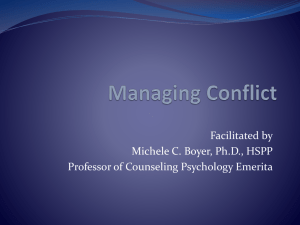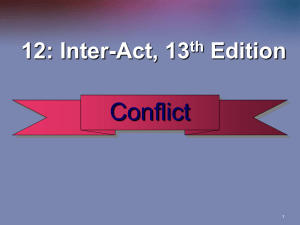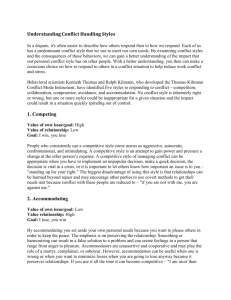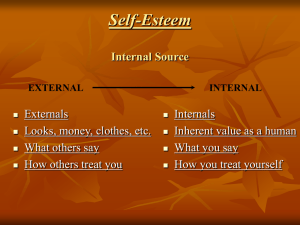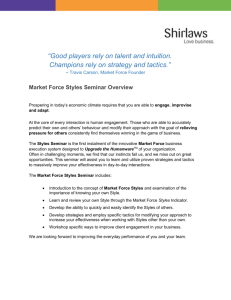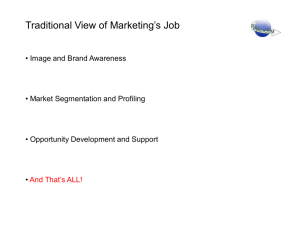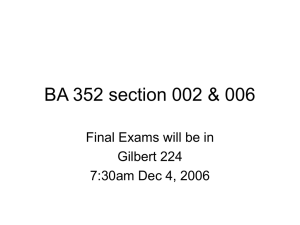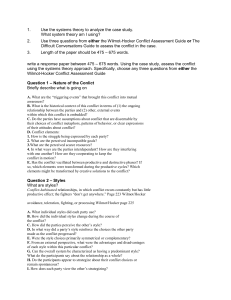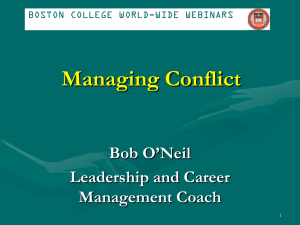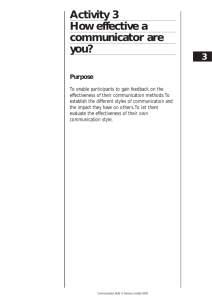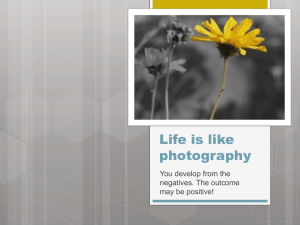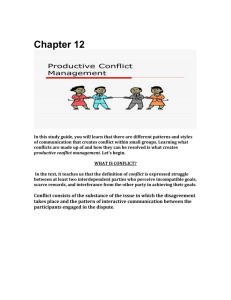Conflict
advertisement
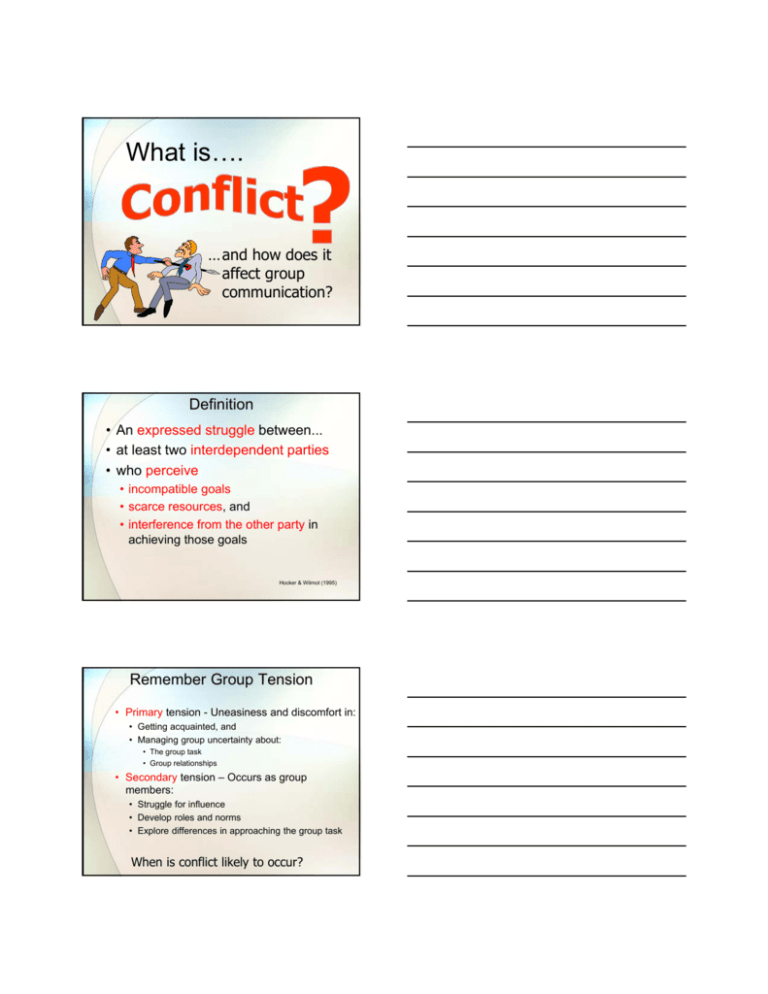
What is…. … and how does it affect group communication? Definition • An expressed struggle between... • at least two interdependent parties • who perceive • incompatible goals • scarce resources, and • interference from the other party in achieving those goals Hocker & Wilmot (1995) Remember Group Tension • Primary tension - Uneasiness and discomfort in: • Getting acquainted, and • Managing group uncertainty about: • The group task • Group relationships • Secondary tension – Occurs as group members: • Struggle for influence • Develop roles and norms • Explore differences in approaching the group task When is conflict likely to occur? Conflict Myths • Can always be avoided • Is always due to misunderstandings • Is always a sign of a poor interpersonal relationship • Can always be resolved • Is always bad Benefits of Conflict • Focuses attention on problems requiring solving • Clarifies potential changes • Identifies important issues to involved parties • You learn about you and your values (and your partner and his/her values) • Keeps relationships interesting • Strengthens relationships when conflict management attempts are successful Types of Conflict • Intrapersonal vs. Interpersonal Conflict – conflict within yourself vs. conflict between people. • Intragroup vs. Intergroup Conflict – conflict within a group vs. conflict between groups. • Pseudo Conflict – lack of understanding (AKA “false” conflict) • Simple Conflict – real differences in ideas, definitions, perceptions, and goals • Ego Conflict – the focus is on the person, not the behavior or the issue Minimizing Pseudo Conflict • Ask what others mean • Establish supportive climate • Actively listen Substance of Conflict • Perceived scarce resources • Information, time, etc. • Diverse backgrounds • Values, abilities/experience/knowledge • Power imbalances • Varying orientations to task accomplishment • Definitions of subject, process, commitment • Conflicts of interest • Competitive group climate and/or defensive communication patterns • Self-centered disruptive roles Styles/Tactics • Conflict styles: Patterned responses • Tactics: individual moves • We tend to rely upon one or two conflict styles “If the only tool you have is a hammer, you tend to see every problem as a nail.” – Abraham Maslow Five basic conflict styles Competition (win/lose) Accommodation (lose/win) Avoidance (lose/lose) Compromise (win/lose, lose/win, lose/lose) Collaboration (win/win) Styles & Tactics Matrix High Concern for OWN Needs & Goals Being Met Low High Concern for OTHER’S Needs & Goals Being Met Difference between Compromise & Collaboration • Focuses on positions • Each side gives up something important (not always 50/50) • Come in with a specific solution in mind • Often involves “turn taking” in solutions • Focuses on interests • Both work together to help address each other’s interests • Create a mutual solution • Often simultaneous activity in solutions Principled Negotiation • People: Separate the People from the Problem People Problem • Interests: Focus on Shared Interests, not Positions • Options: Generate a variety of possibilities before deciding what to do • Criteria: Base decisions on Objective Standards R. Fisher & Ury, 1981 Additional Elements • Strive to be Unconditionally Constructive • Make choices/take actions that benefit both you and the other parties … regardless of whether the other parties reciprocate • Know your BATNA Best Alternative To a Negotiated Agreement How to Work a “Win-Win” • Identify your problem & unmet needs • Make a date to discuss it • Describe your problem & needs • Consider the other person’s point of view • Negotiate a solution • Follow up on a solution
